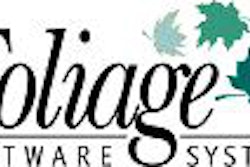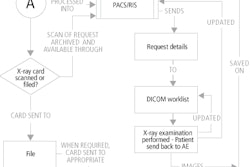PACS workstation auditing tools can spur the development of intelligent and interactive networks, while enabling radiologists to play a vital role in shaping future PACS products, according to a research team from Geisinger Medical Center in Danville, PA, and the VA Maryland Health System in Baltimore.
"Radiologists must become proactive participants if they are to control their own destiny," said Dr. Khan Siddiqui. He presented the team’s research at the 2003 RSNA meeting in Chicago.
Previous observational methods to assess the interpretation process were inefficient and full of errors and bias, Siddiqui said, and also interfered with daily workflow.
Seeking to develop a means of collecting objective data over large segments of the radiology population, the research team developed an automated data extraction and data mining tool to document the actual interpretation process, profiling the interaction between the radiologist and the computer.
The workstation auditing tool was created by extending the capability of an existing tool already developed by a PACS vendor for troubleshooting workstation and system problems. It allows for the study of variables, such as interpretation timeline, workstation configuration, PACS user characteristics, worklist preferences, user study preferences, exam review characteristics, and study layout changes during review.
The initial goal was to identify the concepts underlying the development of an intelligent and interactive PACS that would learn, educate, and provide feedback, Siddiqui said. By profiling the interaction between radiologist and computer, researchers could examine factors such as functional requirements, display protocols, imaging planes, reconstruction algorithms, and short cuts used by successful users, he said.
"The idea was to create an electronic wizard so that the PACS understands our work and understands what (the radiologist is) doing, can provide feedback, and tells you whether user preferences are appropriate or not," he said.
The researchers also hoped for development of enhanced functional computer intelligence and a database that could be referenced, he said. This process empowers radiologists and expands research into the private-practice domain, Siddiqui said.
"It also allows radiologists to actively contribute to future product development and creates a massive database for research," he said.
The researchers chose CT trauma studies for their initial evaluation of their workstation auditing tool. The data mining tool was enhanced, the logs were generated in a more readable format, and results were generated in a tabulated format.
The data analyzed included session time, window/level settings per series, algorithms used, and breakdown of interpretation time. The data demonstrated that the tool could successfully capture radiologist behavior on the workstation, information that could be invaluable for the future design of workstation software and ergonomic systems, Siddiqui said.
To date, the tool does have limitations, as the prototype version is slow and cumbersome. In addition, it requires a software program to extract key data points, Siddiqui said.
The researchers would also like to be able to capture data at both the client and server level, as a time stamp is required for exam closure. Also, a limited number of data points are currently being recorded, Siddiqui noted.
For future study, the researchers would like to expand parameters examined for auditing and logging, work with vendors to change the workstation design based on feedback from the audit logs, and assess the workflow impact of the modifications, he said.
In addition, the study team hopes to create databases specific for each radiologist to show their interaction with the system and identify key items. Other areas on the agenda: the breakup of CT exams into component anatomic regions, and volumetric data analysis.
The intelligent workstation of the future will incorporate data collected using auditing tools, and may be able to achieve major shifts in workstation usage and performance, Siddiqui said.
"We need to change the focus of the design of workstations from engineer-centric to radiologist-centric," he said. "It will empower radiologists to be able to determine how they want to perform interpretation, rather than engineers telling us how to perform them."
By Erik L. RidleyAuntMinnie.com staff writer
February 20, 2004
Related Reading
Mouse roars in workstation navigational study, February 9, 2004
3-D and the future of imaging, November 3, 2003
SCAR tackles image data glut at 2003 show, October 7, 2003
Volumetric image review offers potential, challenges, June 27, 2003
Consumer flat-panel displays show promise for CT diagnosis, June 8, 2003
Copyright © 2004 AuntMinnie.com


















